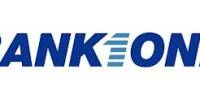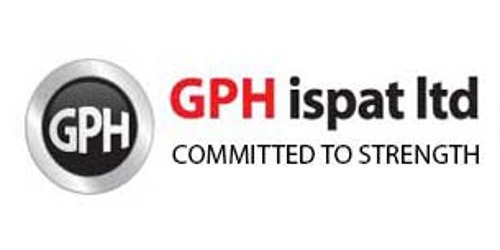Origins
Fundamentally, human resource management is based on the assumption that employees are individuals with varying goals and needs. Human resources should not be categorized with basic business resources (trucks, filing cabinets, etc.).Practicing good human resource management (HRM) enables managers of an enterprise to express their goals with specificity, increasing worker comprehension of goals, and provide the necessary resources to promote successfully accomplishment of said goals.
When HRM is properly employed members of the workforce are expressive of the goals and operating practices of the firm.HRM is seen by practitioners in the field as a more innovative view of workplace management than the traditional approach. Its techniques force the managers of an enterprise to express their goals with specificity so that they can be understood and undertaken by the workforce and to provide the resources needed for them to successfully accomplish their assignments.
As such, HRM techniques, when properly practiced, are expressive of the goals and operating practices of the enterprise overall. HRM is also seen by many to have a key role in risk reduction within organizationsSynonyms such as personnel management are often used in a more restricted sense to describe activities that are necessary in the recruiting of a workforce, providing its members with payroll and benefits, and administrating their work-life needs. Torrington and Hall (1987) define personnel management as being:
“a series of activities which: first enable working people and their employing organisations to agree about the objectives and nature of their working relationship and, secondly, ensures that the agreement is fulfilled”.
While Miller (1987) suggests that HRM relates to:
“…….those decisions and actions which concern the management of employees at all levels in the business and which are related to the implementation of strategies directed towards creating and sustaining competitive advantage”.
Introduction
The human resources of an organization consist of all people who perform its activities. Human resource management is concerned with the personnel policies and managerial practices and systems that influence the workforce. In broader terms, all decisions that affect the workforce of the organization concern the HRM function.
Major HRM responsibilities include work design and job analysis, training and development, recruiting, compensation, team-building, performance management and appraisal, worker health and safety issues, as well as identifying or developing valid methods for selecting staff. HRM department provides the tools, data and processes that are used by line managers in their human resource management component of their job.
The Department of Human Resource Management (DHRM) strives to keep the policies on this web site current. From time-to-time policies are revised to keep pace with generally accepted business practices and to comply with changes in state or federal law. Policies under review will be indicated as such in the index with an asterisk. If the policy you are seeking is noted as “under review,” you should contact your agency Human Resources Officer or DHRM’s Agency Human Resource Services (AHRS)Workface management has become increasingly complex.
The heritage and growth of the human resource management profession is closely linked to people’s attitudes about work, the evolution of employment-related laws and sociological trends. The HR field today recognizes the dynamic relationship between strategy, people, technology and the processes that drive organizations. Although this dynamic relationship appears obvious now, the evolution of the profession has often been slow.One could argue that the HR field dates back to the first working arrangements between master craftspeople and their apprentices.
Before the industrial Revolution, working arrangements involved close relationships between mentors and apprentices dedicated to learning a particular trade. Apprentices were often required to live in the shop or home of the master craftsperson. If an apprentice was injured or sick, the master’s family was responsible for restoring the young worker’s health and welfare. Master and apprentice shared in good times and bad, in profit and in loss.
The usefulness of this age-old relationship came to an abrupt end with the advent of the Industrial Age. In one powerful stroke, the notion of work moved from guilds and home shops to steam-driven factories. The introduction of the assembly line brought a need for low-skilled employees capable of performing repetitive tasks.
Management philosophy at the turn of the century was epitomized by Henry Ford, who often wondered why workers brought their heads to work when all he really needed was their hands and feet. Assembly line production required that large numbers of people come together for work, but these workers were interchangeable and, to some extent, expendable, because few skills were required for most factory jobs.
Employers’ attentions focused on consumer demands, the speed at which new machines produced goods and the processes that drove production — concerns that were sometimes placed well ahead of the needs of employees.
Meaning of HRM
Human resource management (HRM) is an approach to the management of people, based on four fundamental principles.
First, human resources are the most important assets an organization has and their effective management is the key to its success.
Second, this success is most likely to be achieved if the personnel policies and procedures of the enterprise are closely linked with, and make a major contribution to, the achievement of corporate objectives and strategic plans.
Third, the corporate culture and the values, organizational climate and managerial behavior that emanate from that culture will exert a major influence on the achievement of excellence. This culture must, therefore, be managed which means that organizational values may need to be changed or reinforced, and that continuous effort, starting from the top, will be required to get them accepted and acted upon.
Finally, HRM is concerned with integration – getting all the members of the organization involved and working together with a sense of common purpose. HRM is a strategic approach to the acquisition, motivation, development and management of the organization’s human resources.
It is a specialized field that attempts to dead .no an appropriate corporate culture, and introducing programmers which reflect and support the core values of the enterprise and ensure its success. HRM is proactive rather than reactive, i.e., always looking forward to what needs to be done and then doing it, rather than waiting to be told what to do about recruiting, paying or training people, or dealing with employee relations problems as they arise. The techniques for the application of HRM will include many familiar functions of personnel managers, such as manpower
Human Resource Management (HRM) is the function within an organization that focuses on recruitment of, management of, and providing direction for the people who work in the organization. Human Resource Management can also be performed by line managers.Human Resource Management is the organizational function that deals with issues related to people such as compensation, hiring, performance management, organization development, safety, wellness, benefits, employee motivation, communication, administration, and training.HR planning is the first step in the recruiting and selection process.
- “Human resources planning are the process of assessing the organization’s human resources needs in light of organizational goal and making plans to ensure that a competent stable workforce is employed.” – Wendell French.
- “Personnel planning are the process of deciding what positions the firm will have to fill, and how to fill them.” – Gary Dazzler.
In the words of Coleman Bruce (1997) HRP consists of the following elements:
- Establishing and recognizing the future job requirement
- Identifying deficiency in terms of quantity
- Identifying deficiency in terms of quality & specification
- Identifying the sources of right type of man
- Developing the available manpower and
- Ensuring the effective utilization of workforce
Focus of HRM department
“The HRM focus should always be maintaining and, ideally, expanding the customer base while maintaining, and ideally, maximizing profit. HRM has a whole lot to do with this focus regardless of the size of the business, or the products or services you are trying to sell.” (Dr. James Spine, former head of Executive Development at the Tribune Company). HRM is involved in managing the human resources with a focus on expanding customer base that gives profit to the company. The bottom line of the company is the focus of the HRM department as well as the function.
The Activities of Human Resources Management
The activities performed by HRM professionals fall under five major domains:
(1) Organizational design,
(2) Staffing,
(3) Performance Management and Appraisal,
(4) Employee and Organizational Development, and
(5) Reward Systems, Benefits ad Compliance
Acquiring human resource capability should begin with organizational design and analysis. Organizational design involves the arrangement of work tasks based on the interaction of people, technology and the tasks to be performed in the context of the objectives, goals and the strategic plan of the organization.
HRM activities such as human resources planning, job and work analysis, organizational restructuring, job design, team building, computerization, and worker-machine interfaces fall under this domain. Recruitment, employee orientation, selection, promotion, and termination are among the activities that fit into the staffing domain.
The performance management domain includes assessments of individuals and teams to measure, and to improve work performance. Employee training and development programs are concerned with establishing, fostering, and maintaining employee skills base don organizational and employee needs.Reward systems, benefits and compliance have to do with any type of reward or benefit that may be available to employees. Labor law, health and safety issues and unemployment policy fall under compliance component.
Major Trend Affecting HRM
The following trends have an effect on human resource management function and department. The importance of HRM increases due to some of them and the practices of HRM are affected to some extent due to some of them.
1. Increased globalization of the economy.
2. Technological changes and environmental changes.
3. The need to be flexible in response to business changes.
4. Increase in litigation related to HRM.
5. Changing characteristics of the workforce.
The Importance of HRM Measurement
Many HRM systems and activities are not subjected to systematic measurement. Many organizations do not assess either the short- or long-term consequences of their HRM programs or activities. A recurring theme of the book is that measurement and accountability are key components to organizational effectiveness and competitive advantage. Good measurement, allied with business strategies, will help organizations select and improve all of their HRM activities and provide a much stronger connection between HRM activities and organizational effectiveness.
Purpose
It is the Commonwealth’s objective to promote equitable and consistent human resource policies that specifically prohibit discrimination on the basis of race, sex, color, national origin, religion, sexual orientation, age, political affiliation, veteran status, or disability. This Policy manual addresses the rights and responsibilities of Executive Branch agency employees covered by the Virginia Personnel Act (“classified employees”). Additionally, certain policies address wage employees, “At-Will” employees and applicants for employment.
Classified
Employees who are assigned to positions within the occupational families listed in the Commonwealth’s Compensation Plan. These employees are covered by the provisions of the Virginia Personnel Act (Title 2.2, § 2.2-2900 of the Code of Virginia), once they have completed the probationary period.
Restricted
Classified employees whose positions receive 10 percent or more of required funding from non-continuous or non-recurring funding sources, such as grants, donations, contracts, capital outlay projects, or higher education auxiliary enterprise revenues, are designated as restricted employees. Restricted employees have access to the provisions of Policy 1.30, Layoff, only if their immediate prior service was in a non-restricted, full-time classified position. Employees may have access to the provisions of Policy 1.57, Severance Benefits.
Human Resource Management Manual
Provides agencies the basic tools and resources needed to administer their agency’s human resource program. The content of this manual should not be construed as policy; rather it should be used in conjunction with the human resource policies developed by the DHRM. Should there be a conflict between policy and the HR Management manual, the policy prevails.
Basic Principles of HRM:
- Treat people with respect & dignity.
- Treat people as adults
- Deal with people as complete individuals.
- Treat all employees with justice
- Rewards should be earned , not given
- Provide people with all relevant information .
- Make people feel that they are most valuable asset for the organization
Importance of HRM
HRM is the legal liaison between the organization and the employees, they are to uphold the employment and safety laws (OSHA, and civil rights act) as well as follow the practices, which may differ within federal guidelines that the employer authorizes.
Corporations are always searching for better ways to produce goods and services.
When new technological developments give some organizations a competitive advantage, their rivals try to catch up by adopting and improving on the new technologies.
Ford has put many of Toyota’s technical advances to work in its own plants, and General Motors has spent over $50 billion in the last decade to modernize its production facilities.
A large part of this growth is the Human Resources department of these companies, who are responsible for hiring the people with the knowledge to bring new technology into a company. To be successful in the automotive market, these companies needs a highly skilled, flexible and committed work force, a flexible and innovative management, the ability to retain developed talent, and a strong partnership between management.
To achieve these goals, the company needs a talented HR department. Besides hiring the right people to manage and perform specific jobs, HR managers have to build up commitment and loyalty among the workforce by keeping them up to date about company plans, and laying out the implications for job security and working conditions.
From the interview process to my exit interview at the end of the summer, the HR department was every employee’s main connection between the production floor and the Upper management. To be successful in the automotive market, these companies needs a highly skilled, flexible and committed work force, a flexible and innovative management, the ability to retain developed talent, and a strong partnership between management and
Labors. The HR department kept us informed via bi-weekly meetings, a company newsletter, and bulletin-board postings throughout the plant. Whenever a question arose, instead of asking middle-management, an employee could go straight to the HR rep they were assigned to. From my experiences, it seemed like the HR reps knew everything there was to know about the company and how it is run. And I found that to be a very valuable asset. I imagine the same takes place at large corporations around the world, be it Velcro or General Motors.
The backbone of any successful company is the HR department, and without a talented Limited of people to hire, culture, and inform employees, the company is doomed for failure Provides agencies the basic tools and resources needed to administer their agency’s human resource program. The content of this manual should not be construed as policy; rather it should be used in conjunction with the human resource policies developed by the Should there be a conflict between policy and the HR Management manual, the policy prevails.
Trans There are three types of transactions I have seen at Banani branch of MBL. They are:-
Cash
There are two types of activities of cash. They are:-
- Payment
- Receive
Clearing
The main activities of clearing are to clear the cheques of other banks.
For Example: A cheque which is drawn to an account of Dhanmondi branch of Bank Asia but has got cleared from Mirpur Branch of Merantile Bank.
Transfer
The function which is performed within a bank. For Example: Transfer of money from one account to another within same branch.
Functional Area of HRM
Human resource management has some funtional area these are:
Human Resource (HR) planning is a strategic process that forecasts the demand for jobs in the organization and anticipates the supply of workers. HR planning enables the hiring managers and recruiters to obtain the ‘best’ fit between a candidate and the job at hand. It ensures that there are adequate human resources to fill in the slot of the employees who leave the organization.
Recruitment, as a human resource management function, is one of the activities that impact most critically on the performance of an organization. While it is understood and accepted that poor recruitment decisions continue to affect organizational performance and limit goal achievement, it is taking a long time for public service agencies in many jurisdictions to identify and implement new, effective hiring strategies.
In some areas, existing laws inhibit change; in others, the inhibiting factor is managerial inertia. This paper discusses some of the strategies that organizations can and do employ to ensure the existence of the best possible pool of qualified applicants from which they can fill vacancies as and when required.
Selection is a process of picking individuals (out of the pool of job applicants) with requisite qualifications & competence to fill jobs in Organization.
Recruitment Attracts Many but Selection seeks to eliminate as many Unqualified. The key to employee selection is ‘to choose those who are most likely to perform their jobs with max-effectiveness & tend to remain with the Organ.Selection is the process of deciding which candidate, out of the pool of applicants developed in recruting, has the abilities, skills, and characteristics that most closely match job demands.
Once employee is hired, it is important to bring the person into the mainstream of the organization as quickly as possible. Oreantaion program is a series of activities that gives the new employees information to help them adapt to the organization and their new jobs.through this program employee know his/ her duties and benefits of employment.the employee receive an overview of the company- its history , products and services, organization structure and important rules ,policies, and procedures.
Improving or obtaining new skills is part of another area of HRM, known as `training and development.”Training focuses on learning the skills, knowledge, and attitudes required to initially perform a job or task or to improve upon the performance of a current job or task, while development activities are not job related, but concentrate on broadening the employee’s horizons” (Nadler and Wigs, 1986, p. 5). Education, which focuses on learning new skills, knowledge, and attitudes to be used in future work, also deserves mention (Nadler and Wigs, 1986).
Because the focus is on the current job, only training and development will be discussed. Training can be used in a variety of ways, including
(1) Orienting and informing employees,
(2) Developing desired skills,
(3) Preventing accidents through safety training,
(4) Supplying professional and technical education, and
(5) Providing supervisory training and executive education (Herrington, 1995).
Each of the training methods mentioned has benefits to the individual as well as to the organization. Some of the benefits are reducing the learning time for new hires, teaching employees how to use new or updated technology, decreasing the number and cost of accidents because employees know how to operate a machine properly, providing better customer service, improving quality and quantity of productivity, and obtaining management involvement in the training process (Herrington, 1995).
When managers go through the training, they are showing others that they are taking the goals of training seriously and are committed to the importance of human resource development. Training focuses on the current job, while development concentrates on providing `activities to help employees expand their current knowledge and to allow for growth. Types of development opportunities include mentoring, career counseling, management and supervisory development, and job training (Herrington, 1995)
Once a talented individual is brought into an organization, another function of HRM comes into play—creating an environment that will motivate and reward exemplary performance. One way to assess performance is through a formal review on a periodic basis, generally annually, known as a performance appraisal or performance evaluation.
Because line managers are in daily contact with the employees and can best measure performance, they are usually the ones who conduct the appraisals. Other evaluators of the employee’s performance can include subordinates, peers, Limited, and self, or a combination of one or more (Monday and Noel, 1996).
Just as there can be different performance evaluators, depending on the job, several appraisal systems can be used. Some of the popular appraisal methods include (1) ranking of all employees in a Limited; (2) using rating scales to define above-average, average, and below-average performance; (3) recording favorable and unfavorable performance, known as critical incidents; and (4) managing by objectives, or MBO (Monday and Noel, 1996).
Herrington (1995) illustrates how performance appraisals serve several purposes, including:(1) guiding human resource actions such as hiring, firing, and promoting;
(2) Rewarding employees through bonuses, promotions, and so on;
(3) Providing feedback and noting areas of improvement;
(4) Identifying training and development needs in order to improve the individual’s performance on the job; and
(5) Providing job related data useful in human resource planning.
Compensation (payment in the form of hourly wages or annual salaries) and benefits (insurance, pensions, vacation, modified workweek, sick days, stock
A compensation philosophy should specify:
Options, etc.) Can be a catch-22 because an employee’s performance can be influenced by compensation and benefits, and vice versa. In the ideal situation, employees feel they are paid what they are worth, are rewarded with sufficient benefits, and receive some intrinsic satisfaction (good work environment, interesting work, etc.). Compensation should be legal and ethical, adequate, motivating, fair and equitable, cost-effective, and able to provide employment security (Herrington, 1995).
















